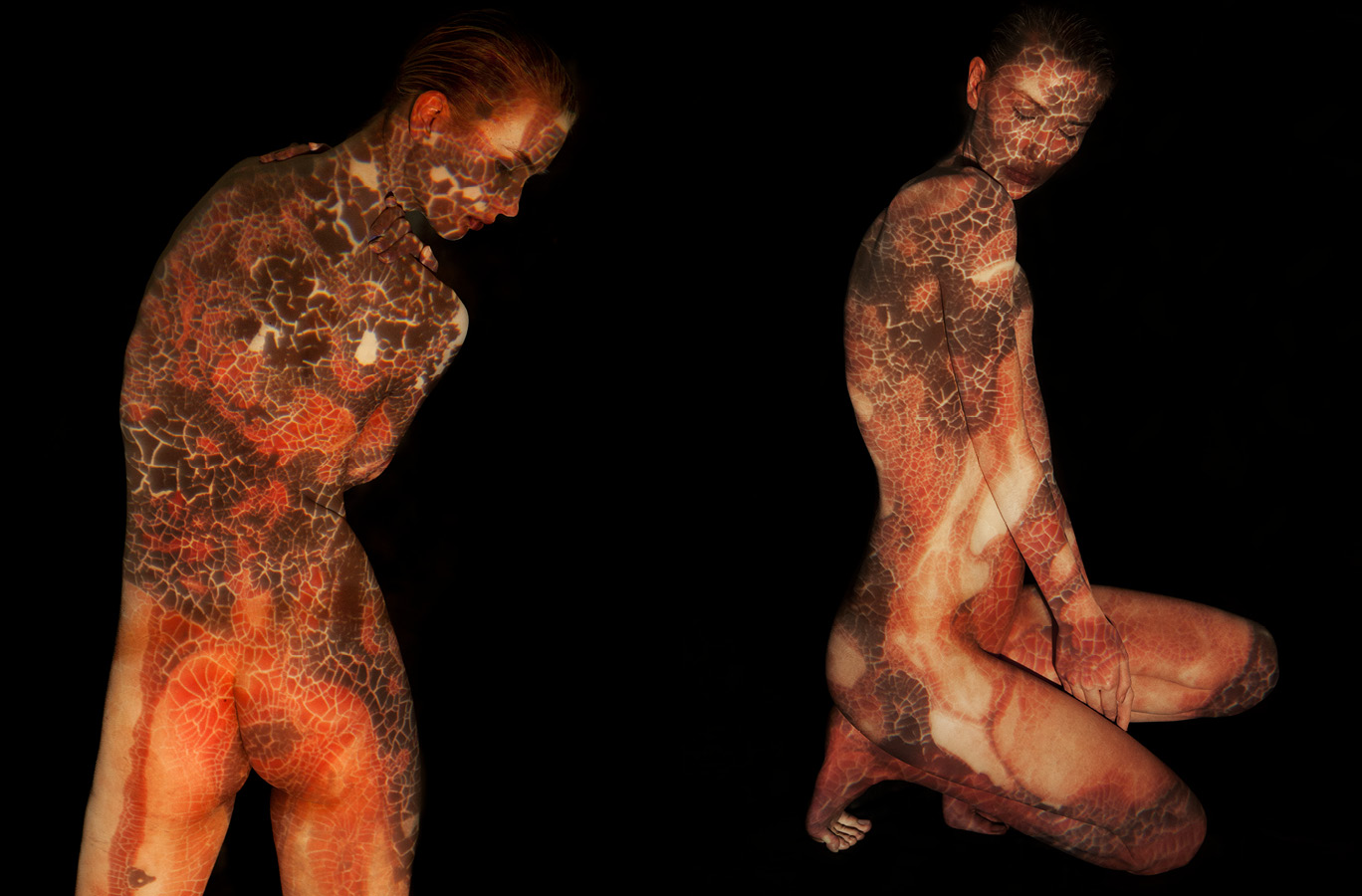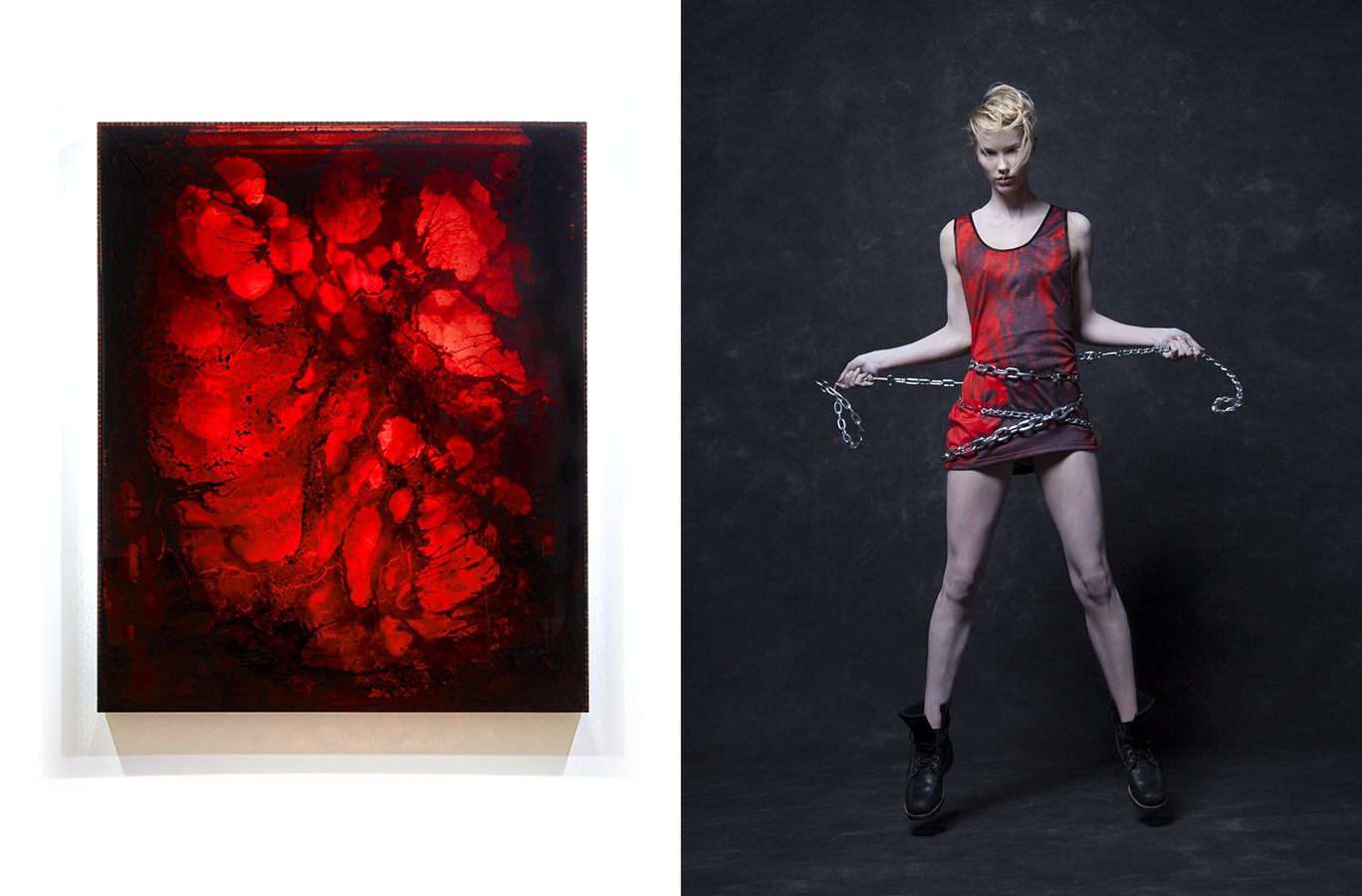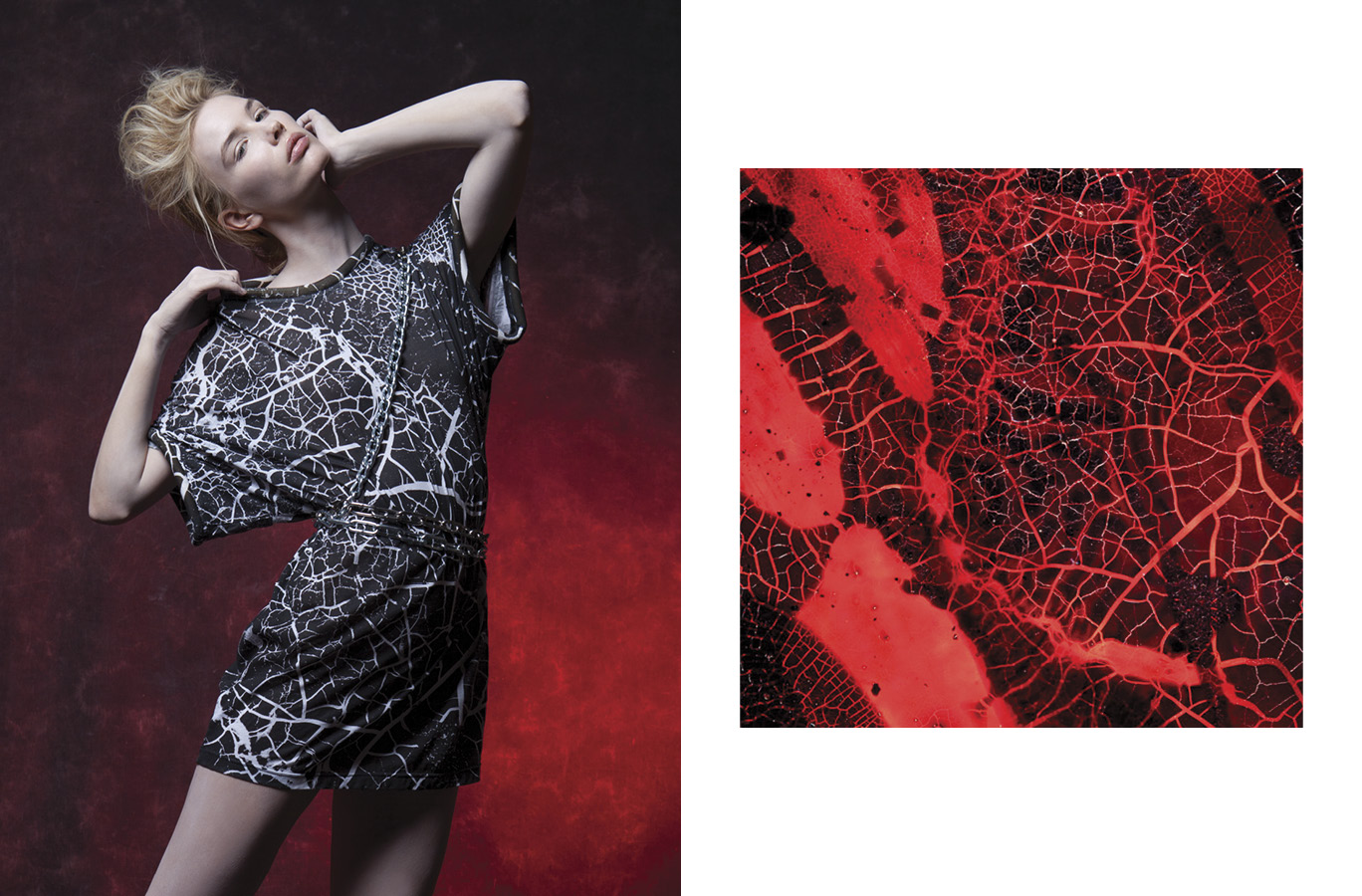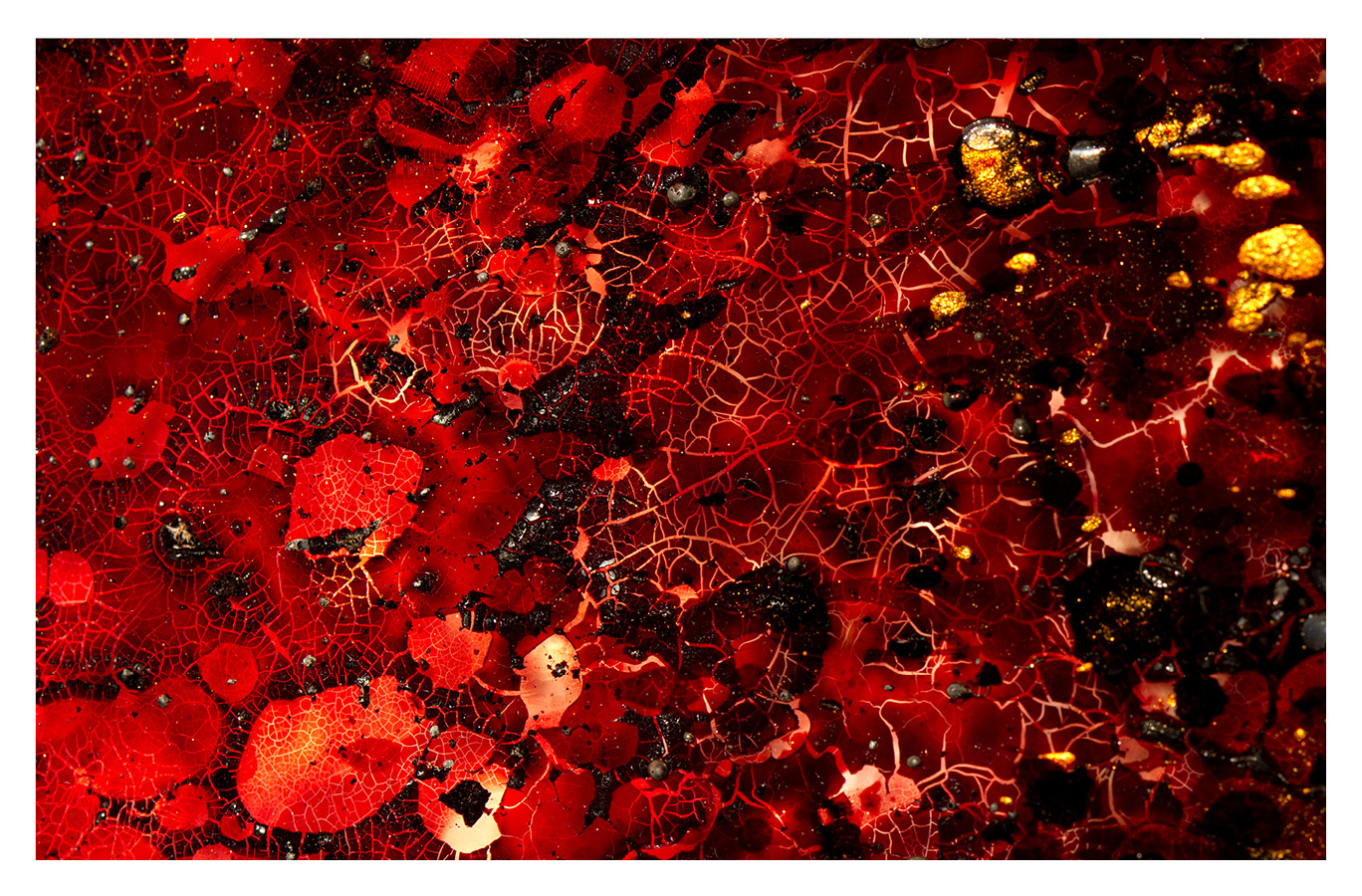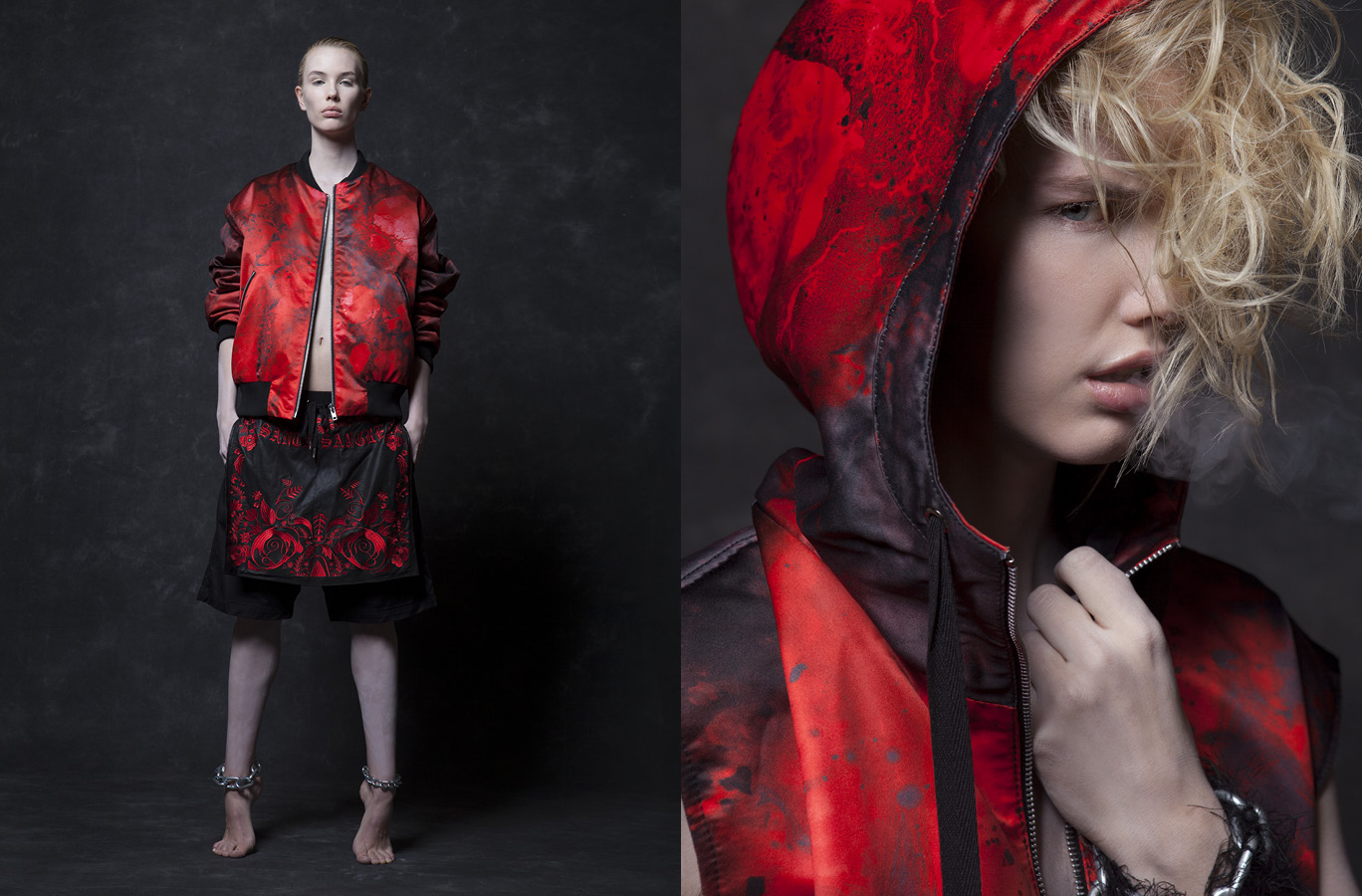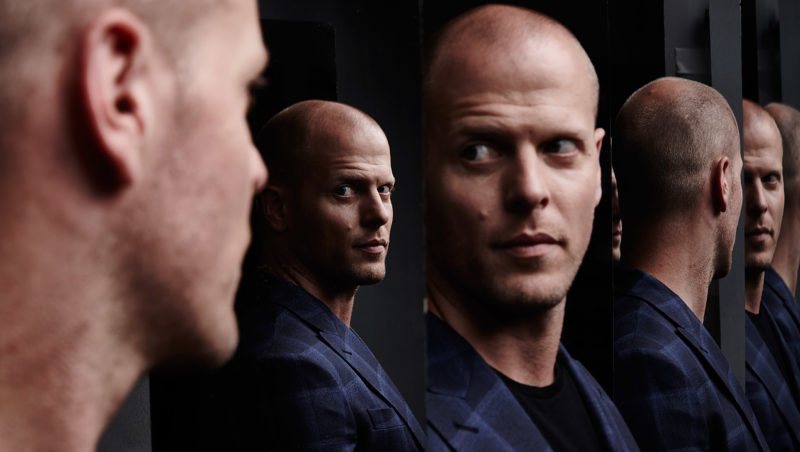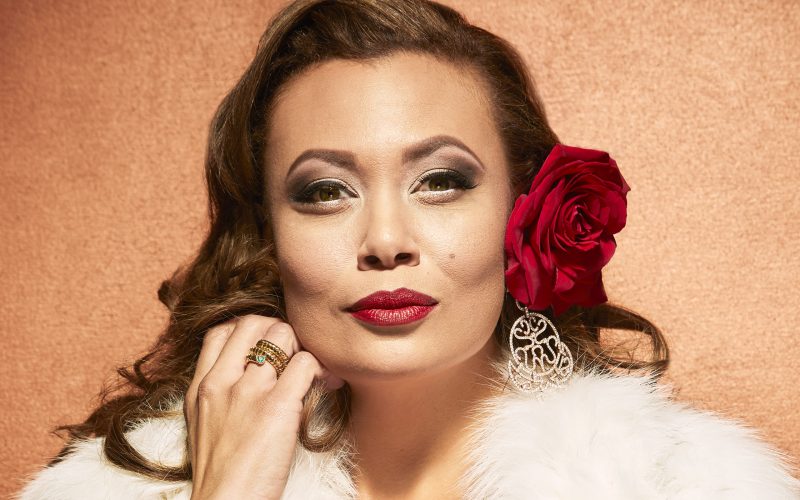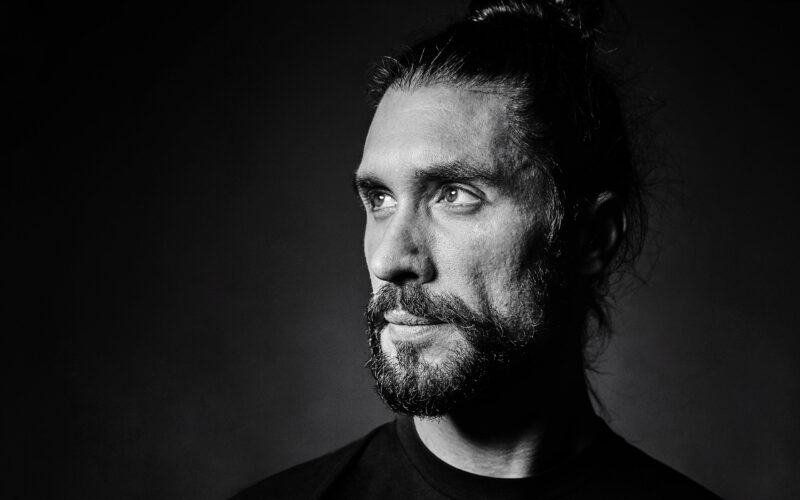Blood-related puns seem to drip off headlines about artist Jordan Eagles, but despite his unconventional medium, his style shares little with Damien Hirst’s preservation – sensationalism or the one-trick-ponies of menstrual art. Beauty envelops his abstract statements of preserved life-energy, all created with blood sourced from a local slaughterhouse.
Eagles lays out a light-activated resin that remains liquid under normal lighting slowly congeals as he applies his materials. This can play out like a masala of sorts, employing blood in various states of decomposition, sometimes using copper as a conductor, to achieve the desired variety of color and texture at different stages during the resin’s setting time.
The works convey a vision of frenetic magma, a moment of intense passion, rendered in a medium certain to incite visceral reactions. Eagles encourages this deeply personal connection in a description of the piece Bar 1-9 (2009): “It’s not paint that runs through our veins, it’s blood.”
His creativity is not limited to two dimensions. The anatomical-themed abstracts have been projected at Manhattan’s Trinity Church, Philadelphia’s Mutter Museum and as a first-floor installation in New York’s 2014 SPRING/BREAK Art Show. Most recently he collaborated with fashion designer Jonny Cota on a series of prints for Skingraft’s Spring 2015 Collection.
Jonny Cota’s collection is inspired by Santeria and Mexican prayer altars, and “elements of blood, smoke, earth and bone.” Acknowledging the connections between heart, mind and body, Santeria has mysterious roots as an underground religion of enslaved or colonized peoples of West Africa and the Caribbean; practitioners balance life energies through entheogen-induced trance and blood sacrifice. Meanwhile, Eagles’ works celebrate body and spirit through preserved life essence; his ritualistic creative process, even utilizing gauze, is an homage to ancient preservation practices.
These parallels led to a fitting collaboration. Highly detailed images of Eagles’ pieces were sublimated into vivid prints on garments, shoes and accessories, a deviation from Skingraft’s longtime association with black, white and earth tones. In keeping with tradition, however, the collection also features monochrome prints of Eagles’ works: the collaborators desaturated high-res details of the pieces, creating a crackle pattern which places the focus on the shape and the nature of the dried blood without the distraction of color. This results in works with a non-repeating pattern and a unique back-story.
For his new piece, Blood MIrror, artist Jordan Eagles has taken a different path to source his preferred medium. Rather than sourcing the blood from a local slaughterhouse, nine gay, bisexual, and transgender men each donated a pint for the artwork: a four-sided monolith in which viewers can see their reflections in preserved blood. This comes in protest of the FDA’s proposed policy that would allow gay and bisexual men to donate blood only if they have been celibate for a full year.
With rapid HIV testing widely-available, it is felt by many that this proposed policy carries an outdated stigma that is not in tune with the current reality and testing abilities, and robs the supply of resources which could save the lives of people from any and all walks of life.
The piece will be on display at Manhattan’s Trinity Church until December 1st.

